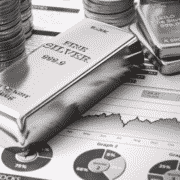Nouriel Roubini, the CEO of Roubini Macro Associates and a prominent economist, argues that it is increasingly difficult for advanced economies like the United States, the United Kingdom, and France to achieve a 2% inflation rate in the foreseeable future.
In a recent interview on Bloomberg Television, Roubini highlighted the “structural changes” taking place in the global economy, suggesting that these changes will lead to higher inflation rates in the long term.
On the supply side, various factors such as geopolitical conflicts, aging populations, immigration restrictions, and the ongoing pandemic are expected to hinder economic growth and drive up production costs. These challenges will undoubtedly have significant implications for inflation.
Simultaneously, on the demand side, increased spending is anticipated as individuals will need to allocate more resources towards addressing issues of inequality, climate change, the pandemic, globalization, and artificial intelligence.
Roubini notes that we have entered an era where the “great moderation” characterized by low inflation below 2% and stable growth is no longer realistic. Instead, he suggests that the “new normal” for advanced economies may hover between 3% and 4% over time. However, Roubini emphasizes that this transition will not happen overnight.
It is clear that achieving a 2% inflation rate has become a significant challenge for advanced economies due to these structural changes. As we navigate through an evolving global landscape, policymakers will need to adapt their strategies accordingly in order to foster sustainable economic growth.
Roubini’s Pessimistic Outlook and Potential Economic Consequences
Renowned for his bearish outlook, Nouriel Roubini, often referred to as “Dr. Doom,” gained prominence prior to the 2008 financial crisis with his bleak predictions. Anticipating a “nightmare hard-landing scenario” and sounding the alarm on the collapse of the U.S. housing market, Roubini made waves.
In a recent column, published in late June, Roubini suggests that the likelihood of a short and shallow economic contraction within the next year has significantly increased. He further warns that if central banks’ efforts to curb inflation result in severe economic and financial instability, policymakers worldwide might choose to tolerate inflation that exceeds their target. However, this approach would come at the risk of unanchoring inflation expectations and fueling a persistent wage-price spiral.
Impact on the U.S. Economy
As attention turns to the Federal Reserve’s September policy meeting, starting tomorrow, Monday witnessed U.S. stocks trading with a modest gain. Investors closely watch these developments. According to the CME FedWatch tool, there is a 99% probability that the Federal Reserve will maintain its current stance when announcing its interest-rate decision on Wednesday afternoon.
Based on FactSet data, the S&P 500, the Dow Jones Industrial Average, and the Nasdaq Composite recorded gains of 0.3%, 0.3%, and 0.2% respectively at the start of this week.
Conclusion
With Roubini’s ominous prediction and markets cautiously awaiting the Federal Reserve’s decision, there is an air of uncertainty surrounding the future economic landscape. It remains to be seen whether Roubini’s concerns will materialize or if central banks will successfully navigate these challenges. The coming days will undoubtedly shed some light on the direction our economy is headed.











Comments